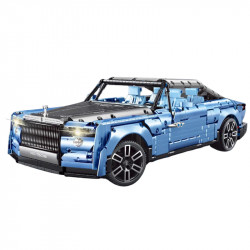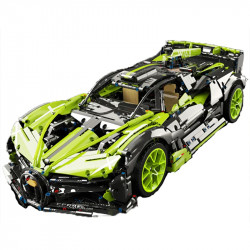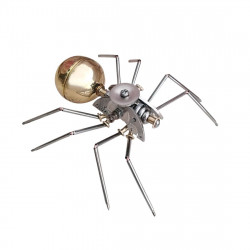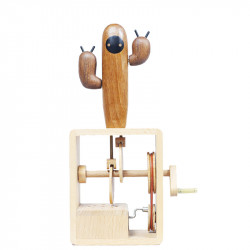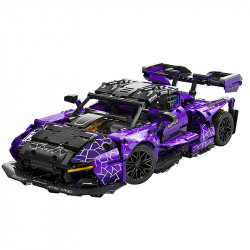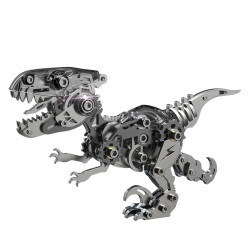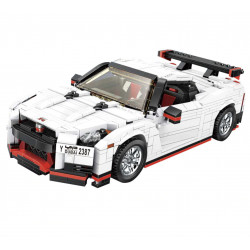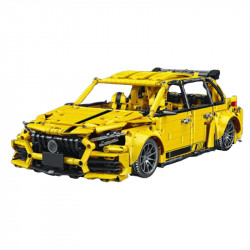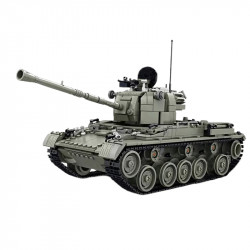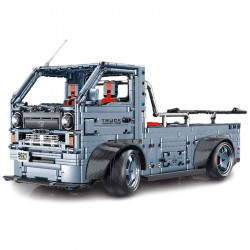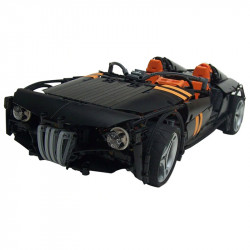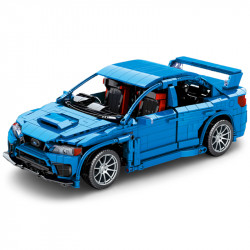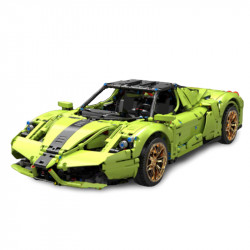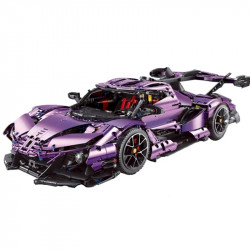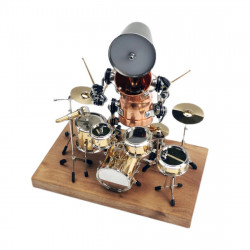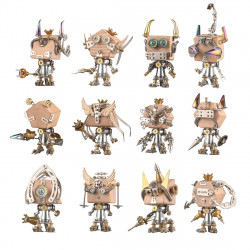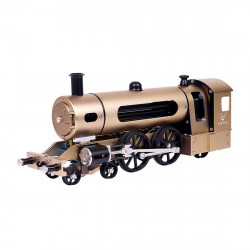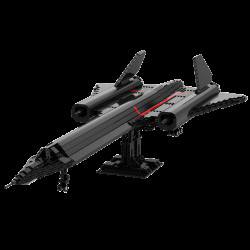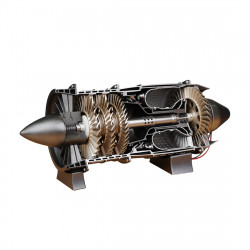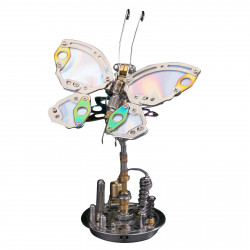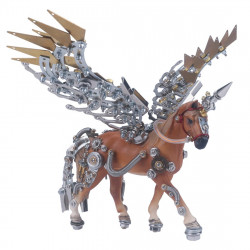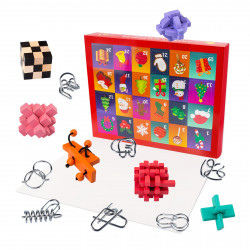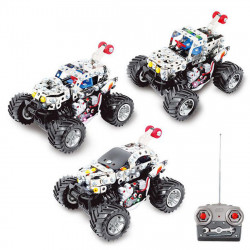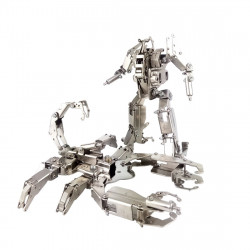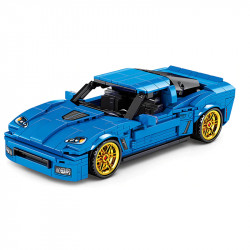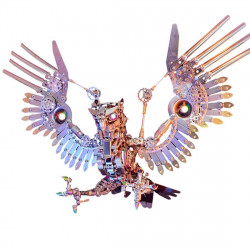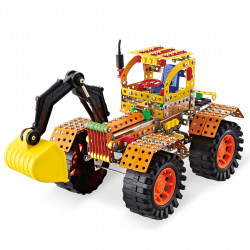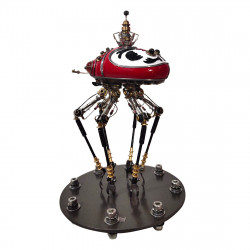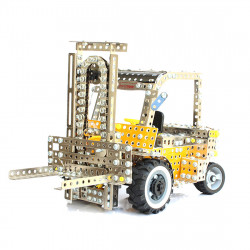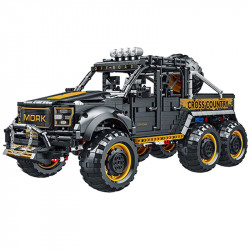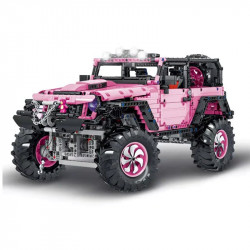The Metal Earth Skill Levels Explained for the Rest of Us

The Metal Earth Skill Levels Explained for the Rest of Us
The "skill level" listed on the Package is still one of the first things I check when I pick up a Metal Earth model kit. The more recent kits will undoubtedly contain this; you might not find it on your older ones. These are sometimes referred to as "difficulty levels." How beneficial are they, and what level should you think about trying? Let's begin at the highest level.
Metal Earth Skill Levels: What Are They? The manufacturer created this rating system with these levels as a broad guide to:
How challenging it will be to construct a model
What amount of experience is essential, and
How many hours of work may be anticipated throughout construction?
It sounds good. However, you'll likely realize these skill levels are highly arbitrary after building a few kits. Another concern is how they stack against the difficulty ratings other metal model firms employ globally.
Let's attempt to make sense of it all.
Metal Earth Skill Levels: According to the Manufacturer
Although Fascinations Inc. manufactures and distributes the Metal Earth models in Seattle, Washington, they are manufactured in China. On the website, Fascinations briefly explains the talent level ranking system.
The difficulty of building a model is indicated by each Metal Earth and ICONX bundle.
As a result, they advise you to
Select a model based on your perceived degree of proficiency.
You should use the rating system to determine your " level." Take note of the wording used there.
They thus admit that their evaluations are merely meant to serve as a reference and are subjective.
It's crucial to remember this, or you risk becoming frustrated. Sometimes, you may question why a model is categorized as "challenging" when you easily pass it with little drama. However, another kit is rated "moderate," you almost lose your mind trying to tighten a loose part due to a single set of difficult-to-reach tabs that won't twist into place. Oh no!
The Four Skill Levels
The purpose of each skill level is outlined in the following table.
Beginner: Semi-casual builder: Casual Builder: Experienced hobbyist
Features: Full play value, de-gated pieces. Features: More pieces, more significant scale. Features: 100+ pieces. Features: 120+ pieces.
Build time: Up to 1 hour. Build time: Up to 2 hours. Build time: 3+ hours. Build time: 5+ hours.
However, remember that not all this information is displayed on the kit.
What you see on the Package
Usually, only a very simple rating "gauge" is displayed; a needle indicates where the maker thinks this kit scores on a 10-point scale:
Levels 1 to 2 are manageable.
Levels 3 to 5 are considered modes.
Levels 6 to 8 are challenging.
Levels 9 to 10 are expertise.
Therefore, if you need more precise information about that particular kit, you should visit its sales page to obtain a more detailed explanation of the difficulty level.
What About Other Manufacturers
Our pastime is growing rapidly, and now a number of other businesses, mainly in China, are making amazing kits. They are gaining popularity because they have significantly increased the variety of themes offered.
However, locating skill or difficulty ratings when purchasing these other brands may be even more difficult.
For instance, Mu and Piececool are two of the more well-known Chinese producers. On their packaging, both businesses display a rating of "stars"; the more stars, the more complex the product. However, these ratings don't always match up with one another or the Metal Earth ratings. These brands usually have more Chinese text on their packaging than English, making reading it challenging.
This is what I generally advise.
It is reasonable to infer that these other brands are generally more intricate than Metal Earth. Therefore, if you're starting, continue using Metal Earth kits for some time. Purchase a few kits with the "easy rating" and progress to the "expert" level. Next, give a few different brands a try. If you can manage expert-level Metal Earth, you're prepared and shouldn't have trouble handling anything in the metal modelling field.
A Final Word of Encouragement
After hearing all this talk about "difficulty" and "expert level, " you might begin to worry that 3D laser-cut metal models are simply too complex for the general public. This couldn't be further from the truth. Building these kits is fun for people of various hobby skill levels, including many kids.
I suggest that anyone prepared to slow down, take their time, and carefully follow the instructions can build most kits, including the more difficult ones.
Starting with Metal Earth kits with a lower rating can make your initial projects more enjoyable as you acquire the required abilities.
